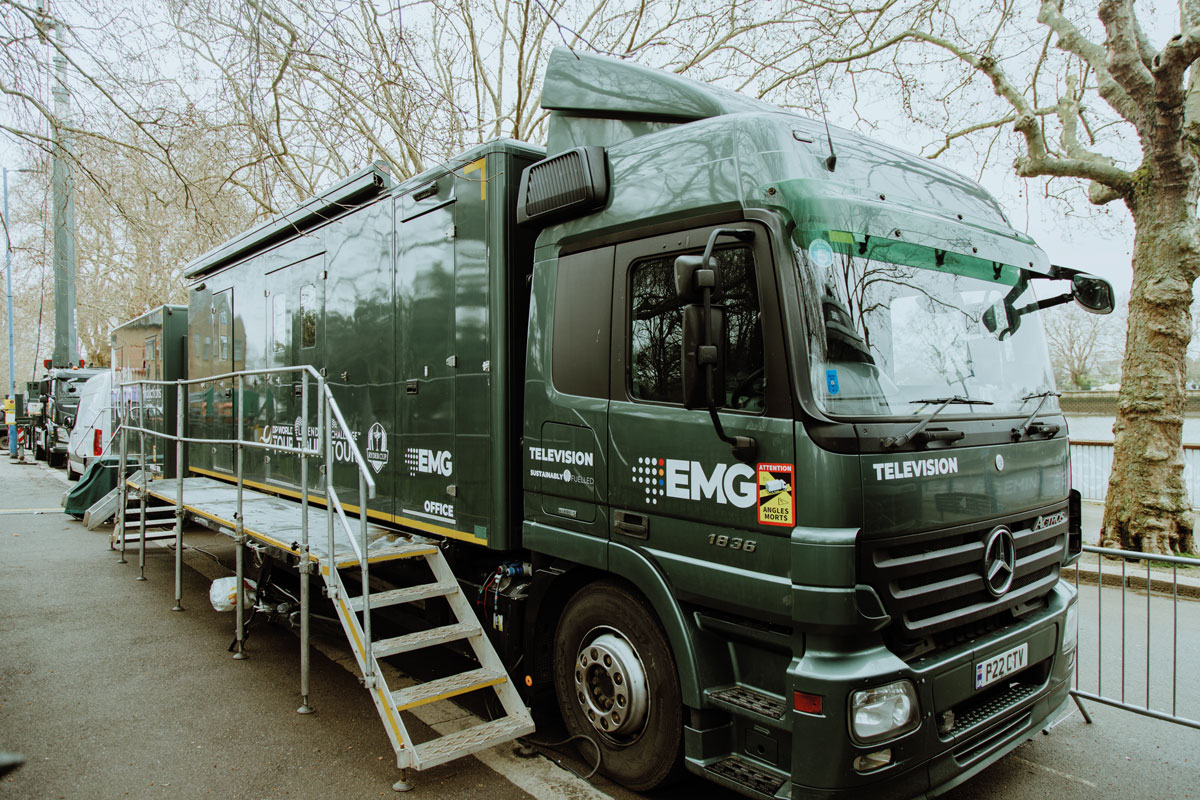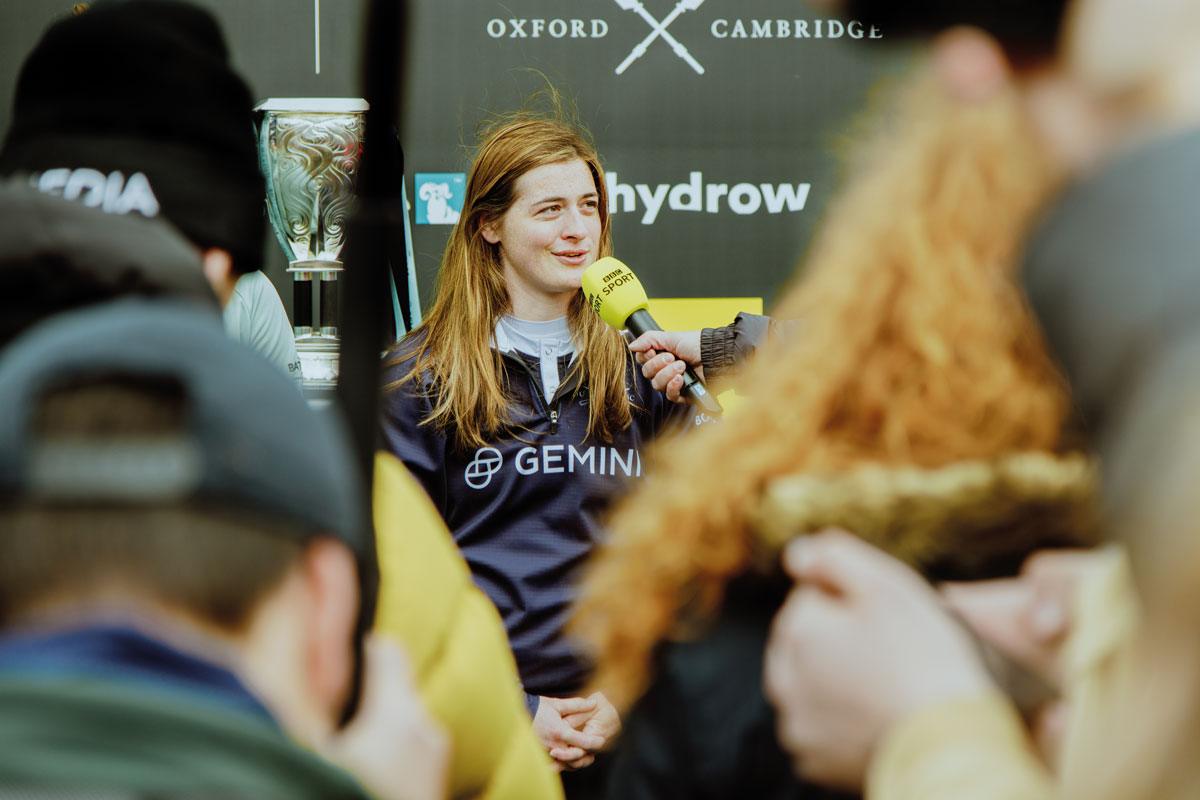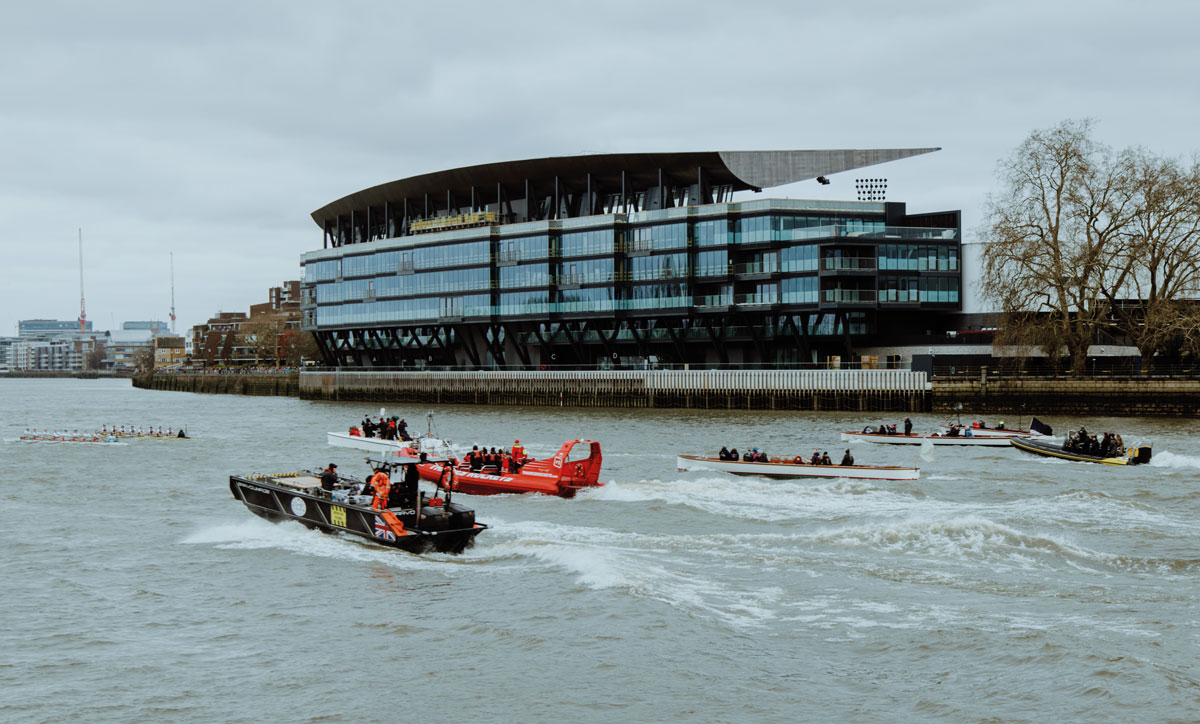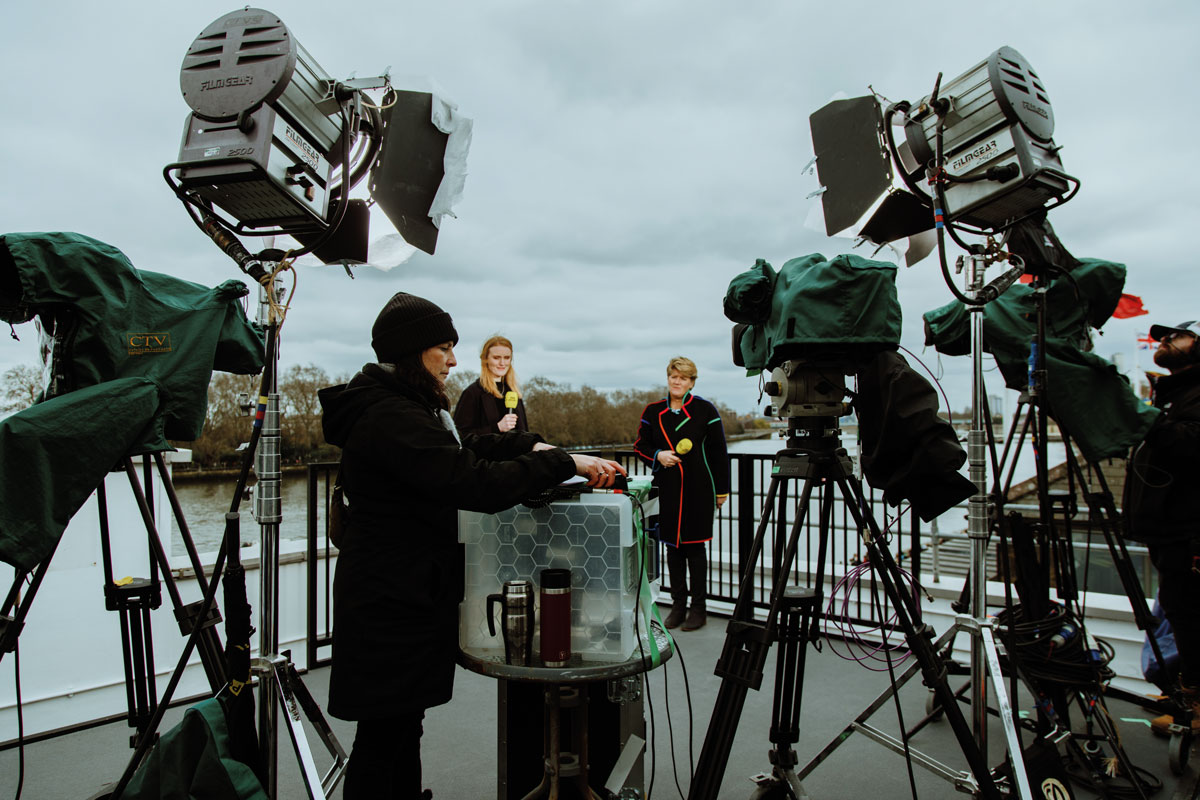Streaming to the World: Gemini Boat Race
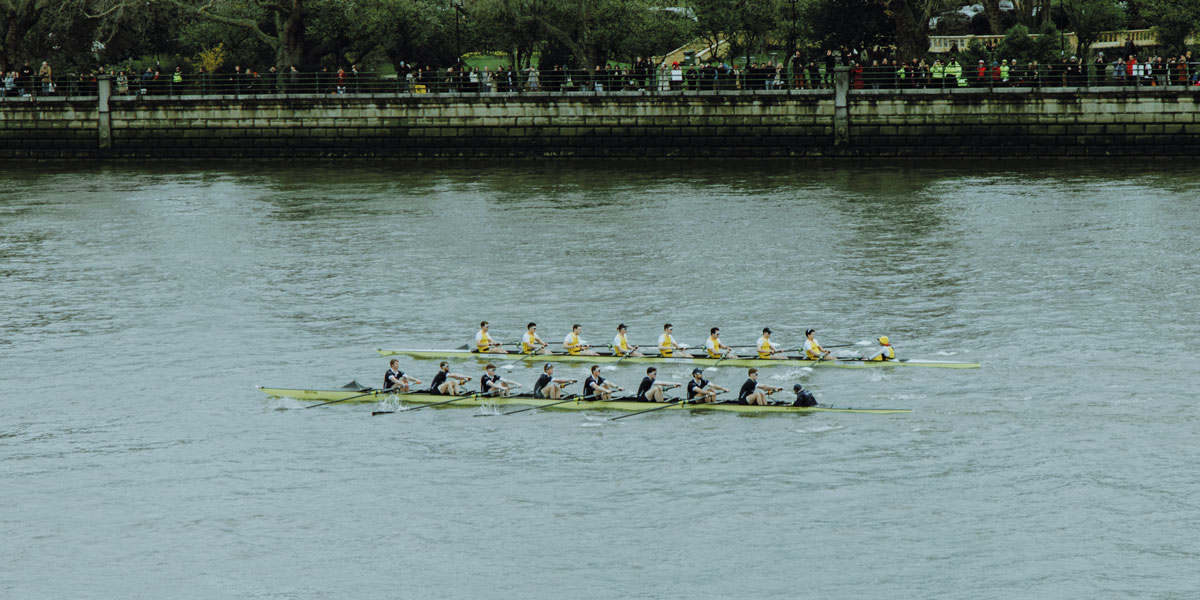
Posted on Jul 18, 2023 by FEED Staff
The Gemini Boat Race has always been a defining mark on the global sporting calendar. FEED got to meet the team who delivered this year’s challenging outside broadcast for the event
On 10 February 1829, a letter was sent from St John’s College, Cambridge to Christ Church College, Oxford reading: ‘The University of Cambridge hereby challenge the University of Oxford to row a match at or near London, each in an eight-oared boat during the ensuing Easter vacation.’
Almost 200 years later, both the men’s and women’s Oxbridge Boat Races have instilled their places as global events on the international sporting calendar. With millions of viewers tuning in worldwide, swathes of spectators only elevate the already high-pressure atmosphere. Drones and helicopter crews capture these crowds, which densely spill along the Thames riverside across the entire length of the race route.
First televised by the BBC in 1938, the original broadcast saw cameras covering only the finish line and the boat house. Viewers heard commentary from John Snagge, with his famous gaffe: ‘Oxford are ahead, no Cambridge are ahead. I don’t know who’s ahead, but it’s either Oxford or Cambridge!’ This was paired with a pretty basic chart showing the race’s progress.
To highlight the production’s rapid evolution since then, the BBC’s 2010 coverage had 25 cameras on land, nine on the water and one in the air.
Fast-forward to 2023, and the world was able to see Cambridge snatch the trophies for both men’s and women’s races – thanks to a sophisticated OB involving 31 cameras across the 4.2 mile course. That camera spec included use of a helicopter, two drones and live feeds from minicams on the Oxford and Cambridge boats as they raced (showing the cox and stroke).
FEED got chatting to some of the team over at FilmNova, the BBC’s official production partner for the race for the second year running.
Oarsome set-up
With the women’s race averaging 2.5 million viewers, and the men’s 3.2 million, it was ever-important to execute a totally seamless broadcast.
The Gemini Boat Race is notoriously challenging to cover due to the nature of volatile geographical and weather conditions. The route cuts through a deeply metropolitan area, making mobility and signal strength tricky to navigate.
“Last year saw major changes to the broadcast,” opens Phil Sibson, managing director of FilmNova. “One of the most significant was being able to introduce drones onto the Thames Tideway for the first time. This year saw a big change in how the race was delivered.”
For the first time ever, as a result of months of planning and the incorporation of new technology, coverage of the full race was delivered from just one OB near the race’s start in Putney. Previously, coverage was delivered through two OBs working together – due to the length of the course.
“That was done because it used to be connected via public street access points and lease lines. With the number of cameras needing to be carried, you can’t transport all those back to the start.
“This year, EMG moved to dark fibre and created an IP mesh, meaning that all the cameras could come back to the start. Matthew, our director, was in turn able to control the entire race from there, where in previous years he would have to hand over to a director over at the finish.”
Euro Media Group (EMG) was the technical supplier for the event. A dark fibre network, like the one created by EMG, provides reliable and secure optical infrastructure to self-manage critical elements of your network.
“Previously, what we were essentially doing was mobile coverage,” explains director Matthew Coliandris. “That was a big part of the motivation to change, it was just too clunky. But also from a flow perspective, it makes sense to have it all in one OB now the technology exists.”
The OB at Mortlake (the race’s end) was retained for resilience purposes – as a backup in case something went down.
“If hypothetically there was a total power failure at Putney, they could have directed the race remotely with a reduced number of cameras,” contributes Sibson.
Sky-high broadcast
Coverage of the race required extensive use of RF and months of planning, what with the new technical innovations being deployed.
“What we had in terms of redundancy were fixed cameras all the way along the course that could see each other from start to finish,” describes Coliandris. “Therefore, if the entire RF operation went down, and in our efforts to meet the mobile cameras on board or in the air, we could still cover the race from those fixed cameras.”
There were two drones: one for racing and one for the warm-up. In the past, crews would row past Putney Bridge and away from cameras pre-race for their warm-ups. This year, FilmNova had them covered on a drone – as part of an enhanced plan.
“We draw up a plan for helicopter and drone, so they have a flight path that tells them which position of the river they need to be at in certain points,” Coliandris adds. “The helicopter doesn’t just go straight down the middle of the river. It’ll be at the Middlesex bank, Surrey bank – at the centre, to the side – just constantly moving around to make the coverage that bit more dynamic, while supplementing it on the ground.”
This preset route meant that, for Coliandris and his team of operators, it was easy to cut to them and know exactly the kind of shot they’d be getting at that moment.
“Another interesting element with the drones: last year was the first time they had permission to fly on the Thames Tideway,” adds Sibson. “That predominantly came about due to the race taking place in Ely during lockdown, so they saw them in action there. From that, they satisfied authorities and demonstrated how they could be used.”
Seamless delivery
The broadcast was a decided success, backed up by both the soaring viewership numbers as well as the crisp and unbroken overall broadcast delivered to our screens.
A hugely experienced presentation line-up included Clare Balding and Andrew Cotter, and the programme was additionally streamed by the BBC website and The Boat Race YouTube channel – meaning an international feed output – with help from the BT Tower.
FilmNova has expressed its thanks to The Boat Race Company and BBC Sport for trusting in the UK-based production company to deliver coverage of the event for another year.



